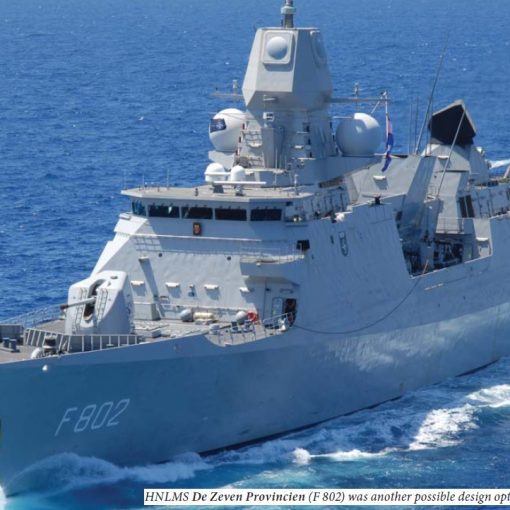[*This article appeared originally in the March 2013 issue of Marine Matters. It is reprinted here with the permission of the publisher.] The Harper Government is committed to reinvigorating the shipbuilding industry in Canada. As a G-8 country Canada should have the capacity to build the ships needed by the federal fleets. Or should it?
Opinion is about as varied as possible on this subject. A UPI report on 13 March announced “Canada upbeat about shipbuilding boom.” Others are not so optimistic. Jeffrey Simpson (“How broken is military procurement?” The Globe and Mail, 16 March) quoted two experts that said the defence procurement system is somewhere between “completely broken” (former Parliamentary Budget Officer Kevin Page) and “broken” (Dan Ross, former Assistant Deputy Minister for Materiel). Simpson noted our overly complex system that involves many government departments and cited two countries – Australia and Great Britain – as positive examples because they have centralized procurement under one authority. Should Canada do the same?
It is nearly impossible to answer these questions because the government has been vague about the priority between the strategic goals of the National Shipbuilding and Procurement Program (NSPS). In another UPI report, one that lamented the slowness of developments, Public Works Minister Rona Ambrose was reported to say the aim of the federal strategy is “to support Canadian jobs and industries, while bolstering the Canadian economy by building ships right here in Canada.” In the same article, former National Defence Minister Peter MacKay said the program aims to ensure both the navy and the coast guard “have the equipment they need to do the work we ask of them.” Depending on what department the speaker represents, the functional purpose of the NSPS is viewed differently. With such a complex undertaking as building ships for a wide variety of federal users, the overarching duty of government is to set priorities and coordinate the activities of the key authorities that have a stake in the outcome. That is not happening.
Instead of a strategy, the NSPS is most often described as a budget and agenda for procurement. It articulates the types, numbers, costs and timeframe for the ships, but not their purpose within a larger vision of how maritime security would be achieved for Canada. Dave Perry and Paul Hillier (“Time to update Canada’s Defence Strategy,” 4 March, The Hill Times) have asked the key question: “What are the governments strategic priorities?” By not setting down their strategic goals in a phased approach to orchestrate the activities of the departments confusion now reigns and momentum is being lost as different bureaucratic agendas come into conflict.
The federal budget will be announced very soon and this is the typical way that decisions get made in Canada about strategic priorities: no funding equals no priority; reduced funding means a lowering status. This is a case of ‘the tail wagging the dog’. Instead of recognizing that strategic factors are demanding changes to priorities, the ‘taps’ are merely turned down or off. If the government’s strategic goal is to achieve maritime security for Canada, but the means are less than before or the motivation to address the problem is changed, the programs stemming from the strategy should be adjusted but not the strategic goal itself. The key to making the logic for all of this clear to everyone is to have an open discussion about the strategic vision. That is not happening either.
Despite the economic downturn, the Government of Canada is lucky. A major conflict is not looming on the horizon, at least as far as we know. This means that our impoverished shipbuilding industry has time to build capacity and develop the skills needed to begin a modest program of relatively simple projects. To expect that the industry will be able to leap from its current anaemic status to a fully vigorous and competitive entity in one graceful movement is pure fantasy. Anyone that assumes world-class ships will be sliding down the builders’ ways any time soon just doesn’t understand the complexity of ship construction or the current state of the industry.
Canada does have a central agency for the coordination and management of government affairs and it has been in existence since 1867: The president of Treasury Board is responsible for “translating the policies and programs approved by Cabinet into operational reality and by providing departments with the resources and the administrative environment they need to do their work.” But, the confusion between the government’s strategic vision and the departmental mandates even reaches into Treasury Board.
“Effective Management of the Public Purse” is a Mission Objective of the Treasury Board that requires it to “provide guidance so that resources are soundly managed across government with a focus on results and value for money.” This drives the funding decisions to favour batch buying to drive unit costs down. Large ‘batch’ purchases of naval ships and the boom-and-bust cycle all stem from this penchant for frugality. It also drives the naval leadership to ‘gold plate’ their requirements because they know the next class of new ships will not materialize in their career, or perhaps even in their lifetime.
Demanding industry to ‘get it right’ the first time on new and innovative designs downloads risk from government onto the shipyards, which are in a fragile state. If the products of the NSPS are inadequate, too expensive or ineffective, the navy and coast guard will have to live with the consequences for a very long time. To minimize the risk to all parties, the government needs to understand that a long-term, phased approach is needed while the industry develops the physical and intellectual sinews for this challenge. Expecting some kind of a miracle to suddenly occur that produces excellence and economy will result in nothing but disappointment and embarrassment.


